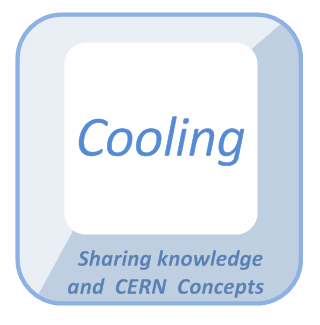|
Converter-Concepts / Cooling |

|
 |
|
 |
|

|
|

|
||||||||||||||||||||||||||||||||||||||||
| Material | Caracteristicsnbsp;@25°C, Patm | |||
|---|---|---|---|---|
| Density [kg.m-3] |
Heat capacity [J.kg-1.K-1] |
Heat conductivity [W.m-1.K-1] |
||
| Air | 1.2 | 1000 | 0.024 | |
| Waterliquid | 1000 | 4185 | 0.58 | |
| Copper | 8940 | 385 | 400 | |
| Aluminium | 2700 | 897 | 200 | |
| Inox | 8000 | 450 | 16 | |
Table of the main material being used in cooling calculations
This table shows copper is a very good material to tranfer heat. Aluminum, being 3 times lighter than copper transmits heat correctly also, and is then often used for optimized weight/performance heatsinks. Storing heat in a given volume of copper is only 1.3 better than in aluminium (at a 3x wight cost). Noticeable difference remains nevertheless the capability (conductivity) the copper vill propose to diffuse heat in the volume, especially if heat is not uniformly transferred to the volume (case of a high density power semiconductor on a oversized heatsink)
 Heat Capacity
Heat Capacity
Formula: heat capacity formula .xlsx
 Heat Transfer Modes
Heat Transfer Modes
Conduction Mode
Convection Mode
A very simple formula is:
Formula: Newton law .xlsx
Formula which required the knowledge of the transfer coefficient of the fluid| Fluid | Transfer Type | |
|---|---|---|
| Natural Convection | Forced Convection | |
| Air Transfer Coefficient h [W.m-2.K-1] | 5..50 | 10..500 |
| Water Transfer Coefficient h [W.m-2.K-1] | 100..1000 | 100..15 000 |
Overview of the transfer coefficient fow air and water
Radiated Mode
Formula: Stefan law .xlsx
 Modeling
Modeling
| TOP | CHARTE | HTML | CSS | Ver : 18-12-2020 20:53:45 | Webmaster : Michel GEORGES. |



